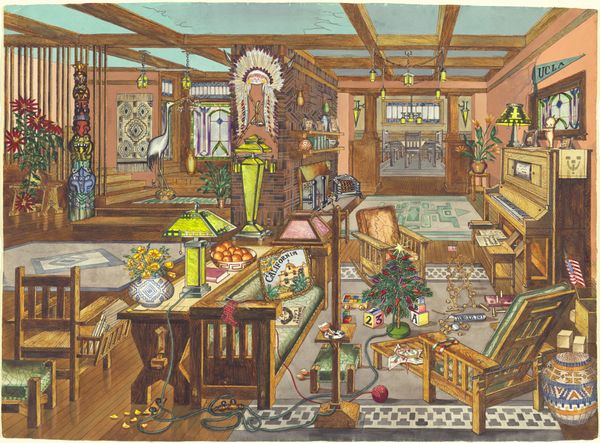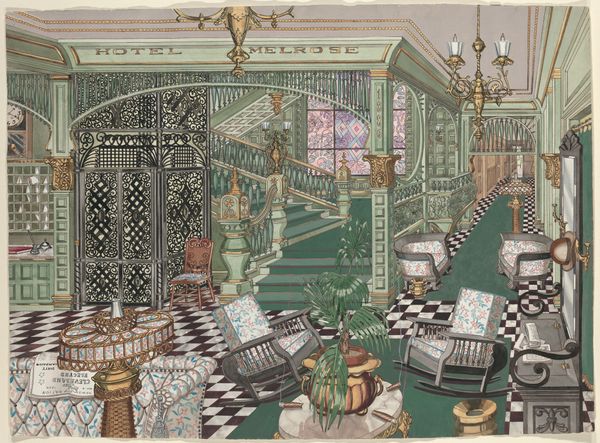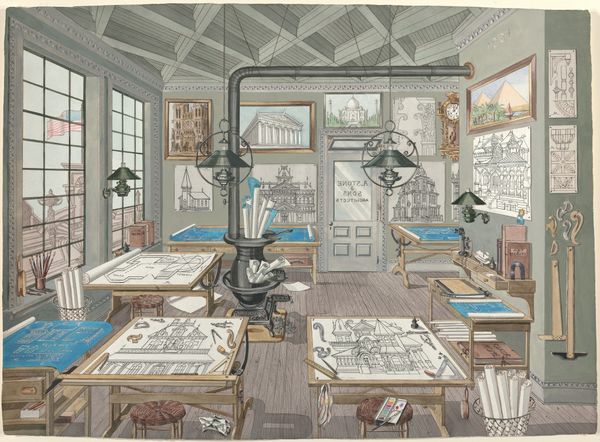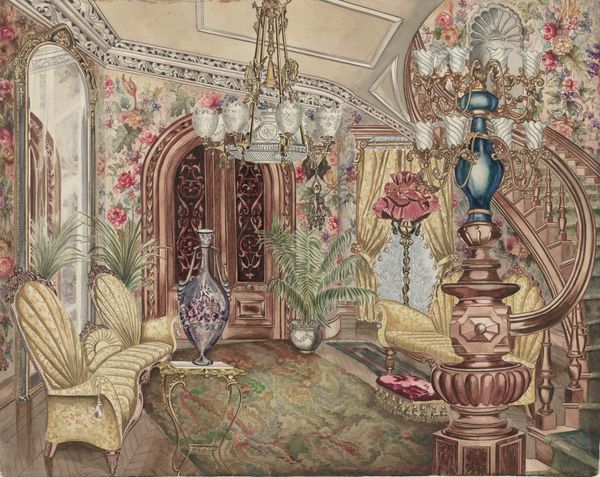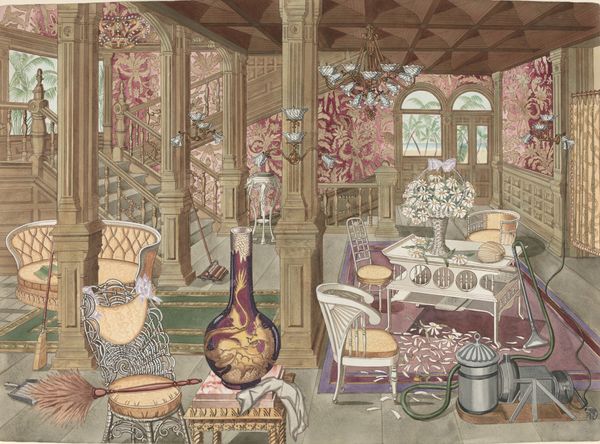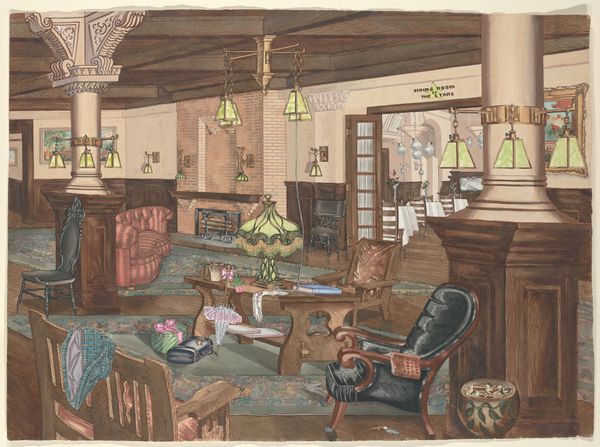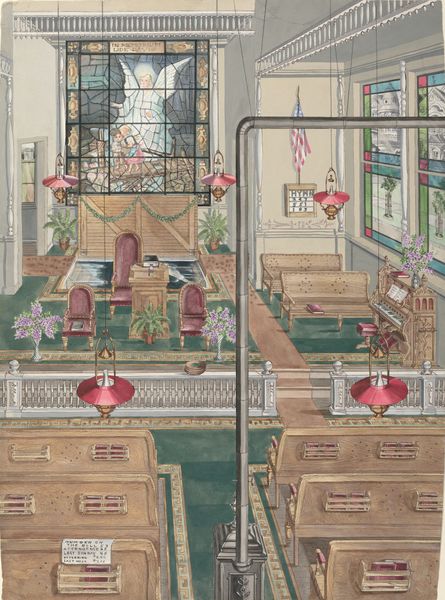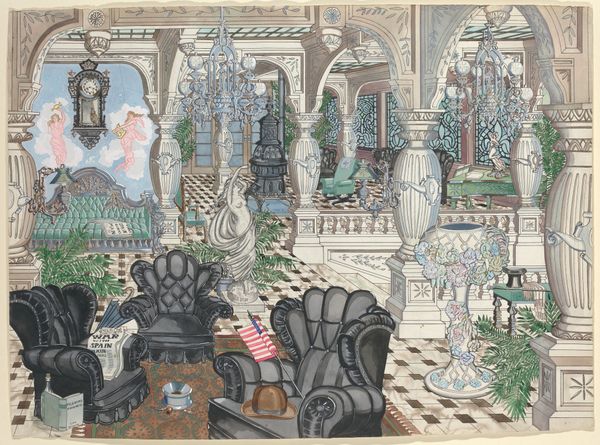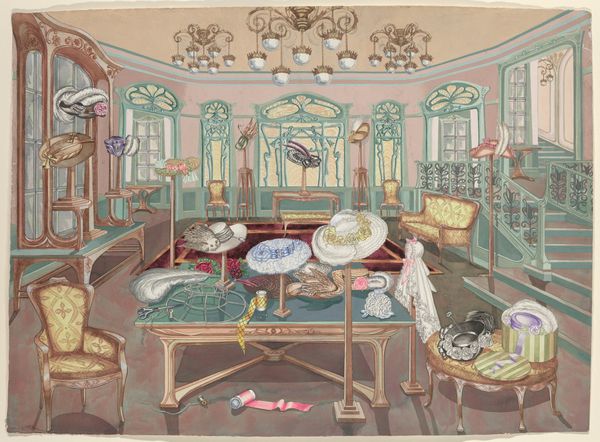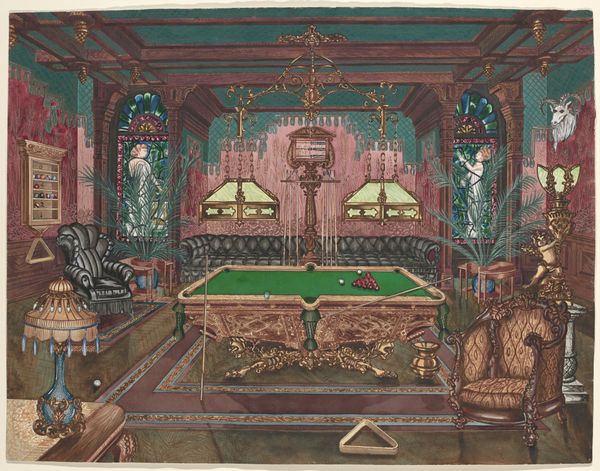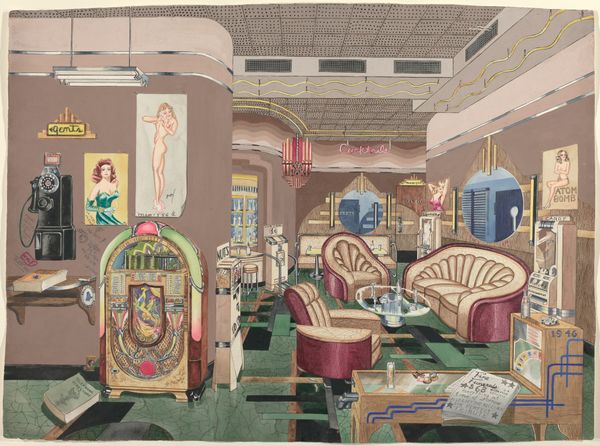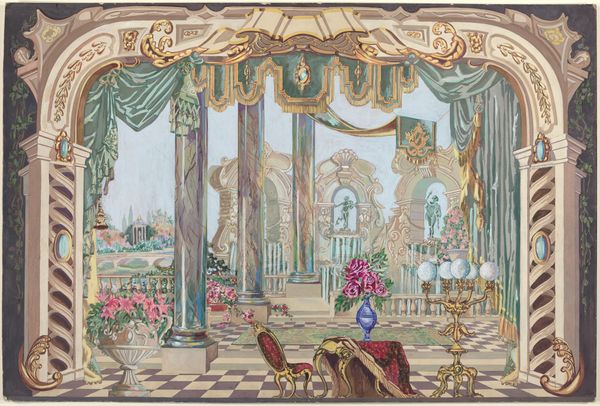
drawing, pencil, architecture
#
drawing
#
landscape
#
perspective
#
intimism
#
pencil
#
architecture drawing
#
architecture
Dimensions: overall: 57.5 x 78.5 cm (22 5/8 x 30 7/8 in.)
Copyright: National Gallery of Art: CC0 1.0
Curator: This drawing, “Veranda, 1885” by Perkins Harnly, probably created between 1935 and 1942, captures a moment in a meticulously rendered space, using pencil and drawing techniques. Editor: It feels incredibly intimate, like we're stepping into a very personal, almost dreamlike, space. How do you interpret this work? Curator: The drawing operates as both a record and a commentary on domesticity and societal norms, particularly focusing on gender roles. Harnly, a queer artist, presents us with a hyper-detailed interior. Consider how the gaze is constructed – we are both inside and outside, looking at the architecture of the 'ideal home'. It could be said he critiques this ideal. What are your thoughts about who this space is built for? Editor: I see that the hyper-feminine details might signify the expected role of women in the household at that time. I mean the excessive floral arrangements and ornate furniture and the view that emphasizes a traditionally feminine domestic scene all hint to this, I think. Curator: Exactly! It's worth considering that the lack of human presence also points to ideas about labor and isolation, too. The abundance feels performative and staged rather than functional, as though we're viewing the trappings of femininity more than a lived-in space. Editor: It's like Harnly invites us to consider how restrictive these beautiful spaces could be, confining individuals within societal expectations and prescribed roles. Curator: Yes! And by situating the work within his own lived experience as a queer artist, he highlights these experiences of otherness and alienation through a perspective of nuanced social commentary. The subversion lies not in overt protest, but in this detailed presentation and quiet disruption of established gender norms. Editor: I’ve never thought of domestic spaces this way, and now I see the layers of societal critique within Harnly's beautiful drawing. Thanks. Curator: Of course. Exploring these overlooked spaces really opens our eyes to broader social narratives, and it is crucial in deconstructing existing power dynamics.
Comments
No comments
Be the first to comment and join the conversation on the ultimate creative platform.
